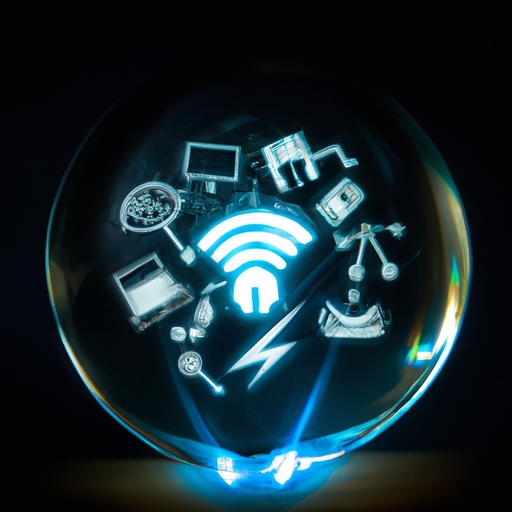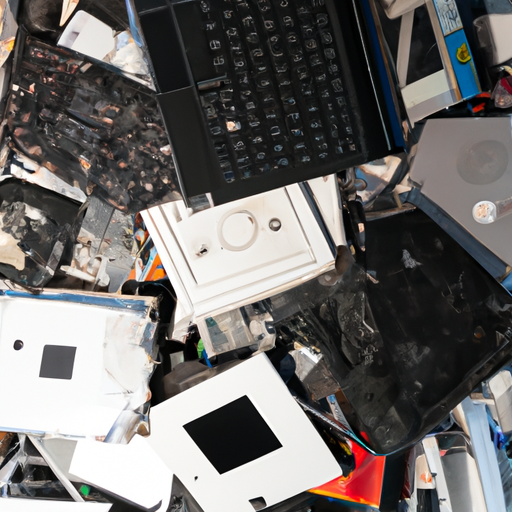Note: As an Amazon Associate I earn from qualifying purchases.
Dilemma: Keeping my current M1 Macbook Pro versus upgrading to the M3 (2023)
Introduction
I’ve been contemplating to upgrade my M1 MacBook Pro to a new M3 Macbook Pro. My M1 has been a great performer so far nevertheless, effortlessly handling everything I throw at it. Below are some of my thoughts.
Prices
Check prices of the M3 Macbook Pro on:
Understanding the M1’s Lifespan and Performance Longevity

When considering the lifespan and performance longevity of the M1 MacBook Pro, it’s important to weigh the pros and cons based on both personal experience and available data. I’ve had hands-on time with the M1, and it’s clear that this chip marked a significant leap in terms of efficiency and power for Apple’s laptop lineup.
Pros of the M1’s Lifespan and Performance:
Remarkable energy efficiency: The M1’s 5nm architecture translates to impressive battery life, which is a huge plus for on-the-go usage.
Powerful performance: Its ability to handle heavy workloads with ease, like video rendering or software compiling, hasn’t slowed down since its release.
Silent operation: The absence of constant fan noise due to better thermal management is a notable plus for work environments.
Sustained updates: Apple’s track record suggests that the M1 will enjoy long-term support with macOS updates.
However, it’s not all sunshine and roses. I tend to also keep an eye on the downsides to maintain a balanced view.
Cons of the M1’s Lifespan and Performance:
Upgrade limitations: What you buy is what you’re stuck with – there’s no option to add more RAM or storage later on.
Early adopter quirks: Though they’ve largely been ironed out, the initial release had its share of compatibility issues with some software.
In my experience, the M1 MacBook Pro has shown little sign of slowing down. Workflows that were initially buttery smooth remain so, and multitasking capabilities haven’t degraded. I frequently run several apps simultaneously – from coding environments to graphic design tools – and the M1’s prowess seems just as capable now as it was out of the box.
The topic of performance longevity can’t go without mentioning the M1’s impressive octa-core design. This leads to a couple of key technical takeaways:
Multi-core architecture: The blend of performance and efficiency cores means that the M1 can handle a range of tasks without breaking a sweat.
Unified memory architecture: This allows for faster access to data and smooth collaboration between the CPU and GPU.
For those curious about the technical underpinnings, exploring Apple’s M1 chip and examining the detailed architecture breakdowns from resources like AnandTech’s deep dive offers valuable insights.
Putting the M1’s value into perspective, it’s hard to deny the gains that have been made. Despite some inevitable growing pains and the trade-offs around upgradability, the M1 chipset stands as a noteworthy milestone in Apple’s hardware evolution. It balances performance, longevity, and efficiency in a way that we hadn’t seen before in the MacBook lineup. I plan on sticking with my M1 for the foreseeable future, as it continues to be a robust and reliable computing partner.
New Feature Temptation Assessing the Value of M3 Upgrades

I’m in the throes of the classic techie dilemma: to succumb to the allure of the latest and greatest, or stick with the reliable workhorse that is the M1 MacBook Pro. On one hand, the M3 chip promises significant performance enhancements that any tech enthusiast would salivate over. On the other, my current M1 machine is holding up admirably, powering through my daily tasks without breaking a sweat.
The allure of the M3:
Cutting-edge performance: The benchmarks I’ve seen are impressive, hinting at a seamless experience for power-users.
Enhanced features: I’m eyeing the potential for better display technology and improved thermals.
Future-proofing: With the M3, I could be set for the foreseeable future concerning software updates and computational needs.
But I must consider:
The M1’s reliability; it hasn’t let me down yet.
The cost of upgrading, which is non-trivial and could be allocated to other tech investments.
Whether the incremental improvements in daily use justify the expense, given that I’m not currently maxing out my M1’s capabilities.
The M3 brings temptation to the table with its high-efficiency cores and the promise of handling more complex tasks effortlessly. Assuming the GPU performance leaps match the CPU’s, this could be a game-changer for creatives and professionals alike.
But it’s not just about raw power. I’m curious about the developments in machine learning capabilities - it might revolutionize how I work with AI applications. And while the rumored battery life improvements sound great, my M1 already lasts a full workday.
One potential drawback is software compatibility. Jumping on the M3 bandwagon early means bracing for the transitional hiccups as apps play catch-up. Remember how some apps took a while to be optimized for M1? There’s a little dejà vu potential here with M3.
From what I’ve gathered, the overall design hasn’t had a radical departure from the M1-based models, which is both good and bad. Good, because Apple’s design is robust, and bad, because I have a soft spot for novelty.
Ultimately, the decision hinges on whether the M3 enhancements align with my usage patterns and needs. Right now, the M1 is certainly no slouch, and the M3, while shiny and new, doesn’t seem to be a mandatory upgrade - at least not in my case. I’ll watch the early adopters leap and gauge their experiences, waiting for that pivotal moment when an M3 feature becomes essential for my work, tipping the scales. For now, though, I’m holding steady with my trusty M1, waiting for the inevitable moment when temptation turns into necessity.
Cost-Benefit Analysis of Upgrading Versus Sticking with M1

When considering the pros and cons of upgrading from an M1 MacBook Pro to the latest M3 incarnation, I find myself weighing practicality against desire for the latest tech. Don’t get me wrong, the M3 MacBooks boast some impressive performance improvements and new features, but is it enough to justify the leap?
Pros:
Increased performance: There’s no denying the M3 chips are faster and more efficient than their M1 counterparts.
Better graphics: Any advancements in GPU will certainly catch the eye of creatives and gamers alike.
Latest features: Touch ID, improved cameras, and brighter displays can make day-to-day usage more pleasant.
Cons:
Cost: Upgrading technology frequently can become a financial strain.
Marginal improvements: The M1 line is still incredibly capable, and in many use cases, the jump in performance might not be perceptible.
For me, an M1 has proven to be a workhorse. It strikes a balance between speed, reliability, and battery life. Whether I’m coding, handling large spreadsheets, or editing photos, I seldom find myself frustrated by its capabilities. Certainly, as I read through tech analyses and comparisons, the urge to upgrade tickles at my consciousness, but I keep coming back to the question: will an M3 genuinely enhance my workflow to a degree that validates its price?
Looking forward, one consideration is software updates and the infamous planned obsolescence. My hope is that an M1 will receive adequate support from Apple for many years, as was the case historically with Intel-based Macs. The environmental aspect plays a role here too, as frequent upgrades contribute to e-waste—a topic that resonates with me.
Another perspective is the second-hand market. If I can sell my M1 while it’s still relatively new, I might recoup a significant portion of the original cost, making the upgrade to an M3 more palatable.
Finally, I must consider the warranty period and the potential cost of repairs for an out-of-warranty device. My inclination is to purchase AppleCare+ for peace of mind, if I opt for a new M3 MacBook.
In weighing all these factors, I naturally lean toward a more conservative upgrade cycle. While I’d typically advocate for “if it’s not broken, don’t fix it,” I can understand the allure of the M3 for those who need the extra power or who can leverage the latest features for tangible gains in productivity or creativity. The dilemma remains: Is it time to upgrade, or should I squeeze every ounce of value out of my trusty M1? This question continues to challenge me, as I navigate the intersection of pragmatism and the allure of the next big thing in tech.
Future-Proofing For Technological Advances and Compatibility

When considering future-proofing for technological advances and compatibility, I often weigh the merits of my current setup against what’s emerging on the market. Let’s break it down:
Pros of Upgrading:
Increased performance: The allure of faster processing power with each new chip iteration can’t be ignored. Sites like AnandTech provide deep dives into the specifics.
Enhanced features: Better graphics, advancements in machine learning capabilities, and new connectivity options like Wi-Fi 6E or Thunderbolt ports start to appear enticing.
Sustainability: With Apple’s commitment to environmental responsibility, newer models also tend to be more energy-efficient.
Cons of Upgrading:
Cost: A significant investment is required, especially for high-spec models.
Diminishing returns: The performance leap from one generation to the next isn’t always as pronounced as marketing might suggest. For many, existing machines like the M1 are still more than adequate for their needs.
E-waste and environmental impact: Naturally, upgrading contributes to e-waste. While recycling programs help, minimizing frequent upgrades is still more eco-friendly.
I’m the type who keeps my machines until they no longer serve their purpose efficiently or can’t run the software I rely on, and I’m not alone. Many developers, for instance, turn to sources like GitHub repositories to check software compatibility with newer hardware before deciding to upgrade.
For many users, myself included, future-proofing is about striking a balance between performance and practicality. The M1 MacBook Pro has a solid track record; it runs cool, is impressively fast, and executes day-to-day tasks without hiccups. Its longevity seems secured for now, particularly with Apple’s historical pattern of long-term software support.
However, emerging technologies can introduce requirements or enhancements that older machines may struggle with. For instance, developers might need to run heavier workloads or engage in machine learning projects requiring the grunt of an M3 chip. Apple Silicon’s neural engine improvements could mean a lot for those pushing the envelope in creative or AI-driven domains.
Choosing not to upgrade doesn’t freeze you out of advancements either. Software optimizations, even in major operating systems like macOS, can breathe new life into older computers. And let’s not discount the resale value of Apple products – holding onto a well-maintained M1 MacBook might yield a good return if you decide to upgrade when the leap in technology justifies the expense.
Ultimately, weighing up the pros and cons of upgrading is a deeply personal decision – one that varies depending on individual use cases, budget considerations, and environmental consciousness. While the technological caterpillar will eventually transform into a butterfly, there’s still a lot of flight left in the M1 ‘cocoons’ around the world.
Environmental and Economic Implications of Frequent Upgrades

As someone navigating the waters of technological upgrades, I’ve considered several factors in the debate of frequent upgrades, particularly when looking at the Apple M1 MacBook Pro versus the lure of the new M3 models. It’s a topic teetering on both environmental conscience and economic sensibility. Here’s my take on it:
Environmental Impact: Continuously upgrading hardware means contributing to e-waste. The production and disposal of electronic devices generate a significant carbon footprint. Apple, while working towards greater sustainability, still has a ways to go. Upgrading only when necessary aligns with a reduced environmental impact.
Economic Concerns: Frequent upgrades hit the wallet, and the resale value of Macs, while reasonably high, diminishes with each new release. Nevertheless, the performance of the M1 chip proves it’s still a contender in power and efficiency, which may ease the economic pressure to upgrade for many.
Technological Waste: There’s an enormous tech waste issue when users upgrade often, as older but still functional devices become redundant.
Yet, it’s essential to highlight that there are positives to consider too.
Advancements in Technology: While the M1 is robust, Apple’s M3 will undoubtedly pack more power and efficiency. For those in specific fields where that edge is vital, it can translate to time saved and possibly more income generated.
Future-Proofing: An argument for acquiring the latest tech is longevity. Investing in newer hardware could ostensibly stretch the time before one’s next upgrade.
Software Compatibility: This ties into future-proofing. Newer models are more likely to support upcoming software requirements and updates.
However, these points don’t obscure the fact that upgrades should not be impulsive but calculated, with close attention paid to the underlying need versus want paradigm.
In conclusion, my inclination is to cautiously consider the urge to upgrade. While the M3 tantalizes with its promises of unexplored potential, the tangible benefits need to outweigh the financial cost and the environmental toll. This kind of decision-making doesn’t just apply to personal finance but speaks to a broader ethic of sustainability that we should all integrate into our consumption habits. The best choice for each individual will vary, but I hope we’re all asking ourselves the right questions — and finding answers that make sense for us and for the planet.